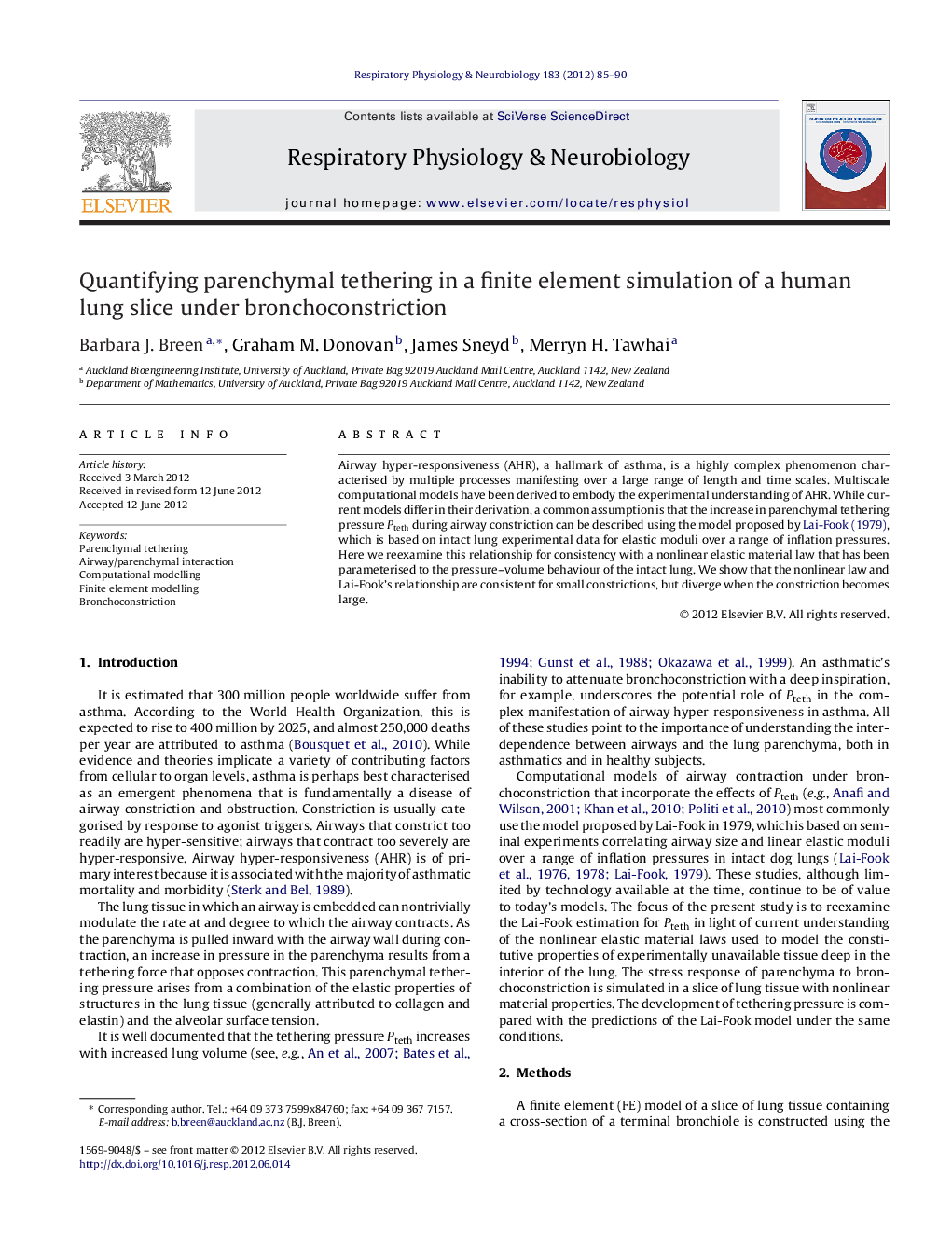| Article ID | Journal | Published Year | Pages | File Type |
|---|---|---|---|---|
| 2847244 | Respiratory Physiology & Neurobiology | 2012 | 6 Pages |
Airway hyper-responsiveness (AHR), a hallmark of asthma, is a highly complex phenomenon characterised by multiple processes manifesting over a large range of length and time scales. Multiscale computational models have been derived to embody the experimental understanding of AHR. While current models differ in their derivation, a common assumption is that the increase in parenchymal tethering pressure Pteth during airway constriction can be described using the model proposed by Lai-Fook (1979), which is based on intact lung experimental data for elastic moduli over a range of inflation pressures. Here we reexamine this relationship for consistency with a nonlinear elastic material law that has been parameterised to the pressure–volume behaviour of the intact lung. We show that the nonlinear law and Lai-Fook's relationship are consistent for small constrictions, but diverge when the constriction becomes large.
Graphical abstractComparison of parenchymal tethering pressure calculated using the Lai-Fook whole lung intact tissue approximation and using nonlinear elastic material law.Figure optionsDownload full-size imageDownload as PowerPoint slideHighlights► Nonlinear elastic material laws (NLEML) were used to model lung slice with “airway”. ► Cauchy stress resulting from constriction of the adventitial radius was simulated. ► Results compared to Lai-Fook (LF) approximation for Pteth. ► NLEML agrees with LF in linear regime, predicts stronger Pteth at large constrictions.
